Delivery terms
Pickup In Store For free
Quantity in shop
 3 pcs 3 pcs | Vilnius Žirmūnai Store |
 2 pcs 2 pcs | Vilnius Naujamiestis Store |
 3 pcs 3 pcs | Kaunas Store |
 Not available Not available | Klaipėda Store |
 2 pcs 2 pcs | Šiauliai Store |
 Not available Not available | Central Warehouse (new location) |
Home delivery in Lithuania
Over €70.00 (Orders up to 1000 kgs) | For free |
To €70.00 (Orders up to 3 kgs) | 3,49 |
To €70.00 (Orders up to 1000 kgs) | 3,49 - 4,99 € |
Delivery to a DPD Pickup location
2,39
Product description

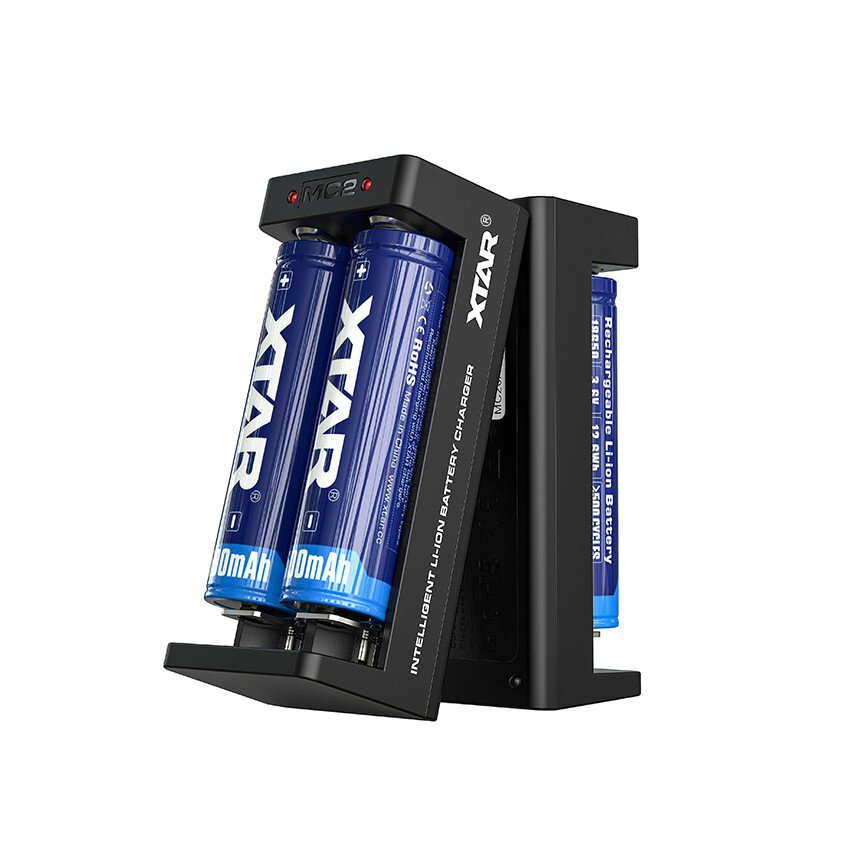
Professional, compact processor chargerXtar MC2 USB-C
for Li-ion batteries in sizes 18650 and others
Key Features
- processor-controlled three-stage TC/CC/CV charging process
- Two Independent Charging Channels
- powered by any USB-C charger or from a computer's USB port (min. 0.5A)
- small size - easy to carry
- function of reactivation of deeply discharged cells
- protections: short-circuit, thermal, reverse polarity protection
!! NEW VERSION WITH CHANGED SOCKET TO USB-C!!
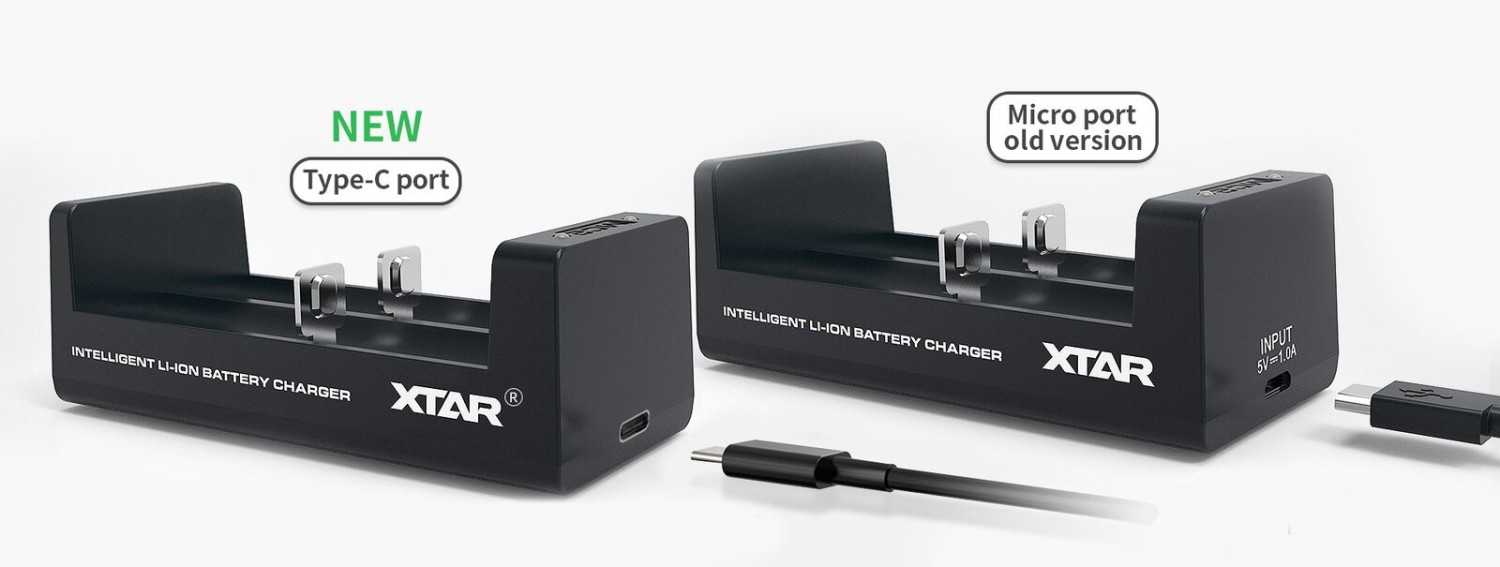
A fully professional processor charger with a three-stage TC/CC/CV charging process is hidden in a small housing. It charges 1-2 Li-ion 3.6/3.7V cells of any capacity in sizes 10440, 14500, 14650, 16340, 17500, 17670, 18350, 18500, 18650, 18700. It is also possible to charge one battery with size 20700, 21700 - only unprotected, 25500, 26500.

What is the TC/CC/CV charging method? It is a three-stage charging process for Li-ion cells, ensuring that the cell is kept in good condition by charging with the appropriate current at each stage and completing the charging process at the right time.
The different stages of the TC/CC/CV process are:
- TC phase: cells discharged below 2.85V are 'woken up' by a lower current.
- CC phase: when 2.85V is reached, the cell is charged with a constant current of 0.5A or 0.25A (depending on the power source used).
- CV phase: when the cell is almost charged, the charger switches to charging with decreasing current until the voltage of 4.2V across the cell is reached. When 4.2V is reached, the charging process is complete - the battery is fully charged.
Batteries with a voltage of 4.1V or higher are treated as charged by the charger. To fully charge such a battery, it must be inserted into the charger before turning it on to the power supply. Charged batteries left in the charger will undergo a natural self-discharge process. Charging will resume when the battery voltage drops below 4.1V.
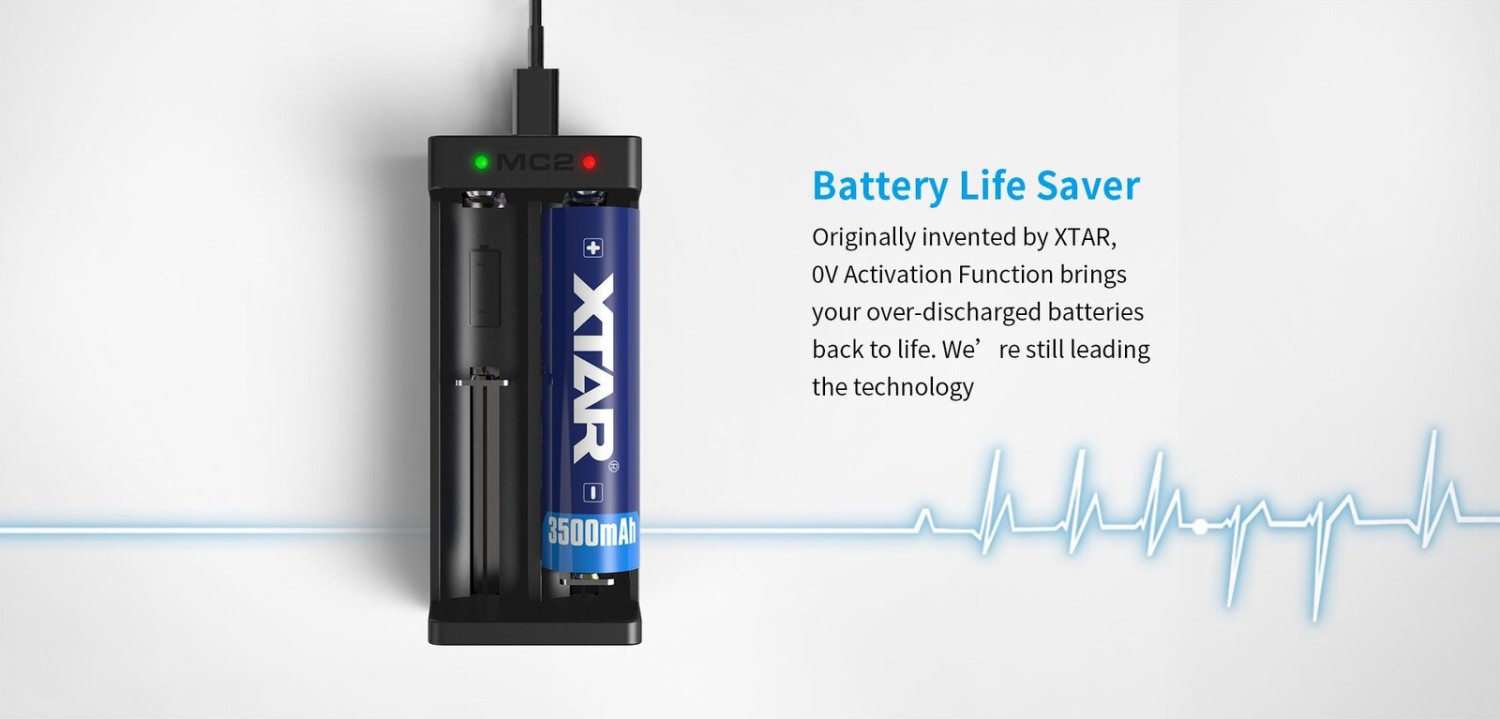
The Xtar MC2 charger has the function of reactivating deeply discharged cells and cells with a voltage of 0V. Many chargers on the market are not able to charge such batteries. This is where the Xtar MC2 charger comes in handy, which in many cases allows you to 'rescue' such cells. Simply insert a deeply discharged battery into the MC2 charger as you would with normal charging - the charger will detect the discharged cell and attempt to reactivate it.
Remark! Cells discharged below a certain level are irreparably damaged and may not be able to be reactivated. Avoid discharging Li-ion batteries too deeply – this can lead to a significant reduction in their durability and capacity, or lead to their complete inefficiency.
Chargers from other manufacturers can significantly increase the temperature of the charged cells during charging. If the cells get too hot, they can wear out faster. With the MC2 charger, Xtar has gone one step further than the competition by solving this problem in a simple way: it uses power from an external power supply. Thanks to this, the temperature of the battery charged in the MC2 will increase by a maximum of 15 degrees
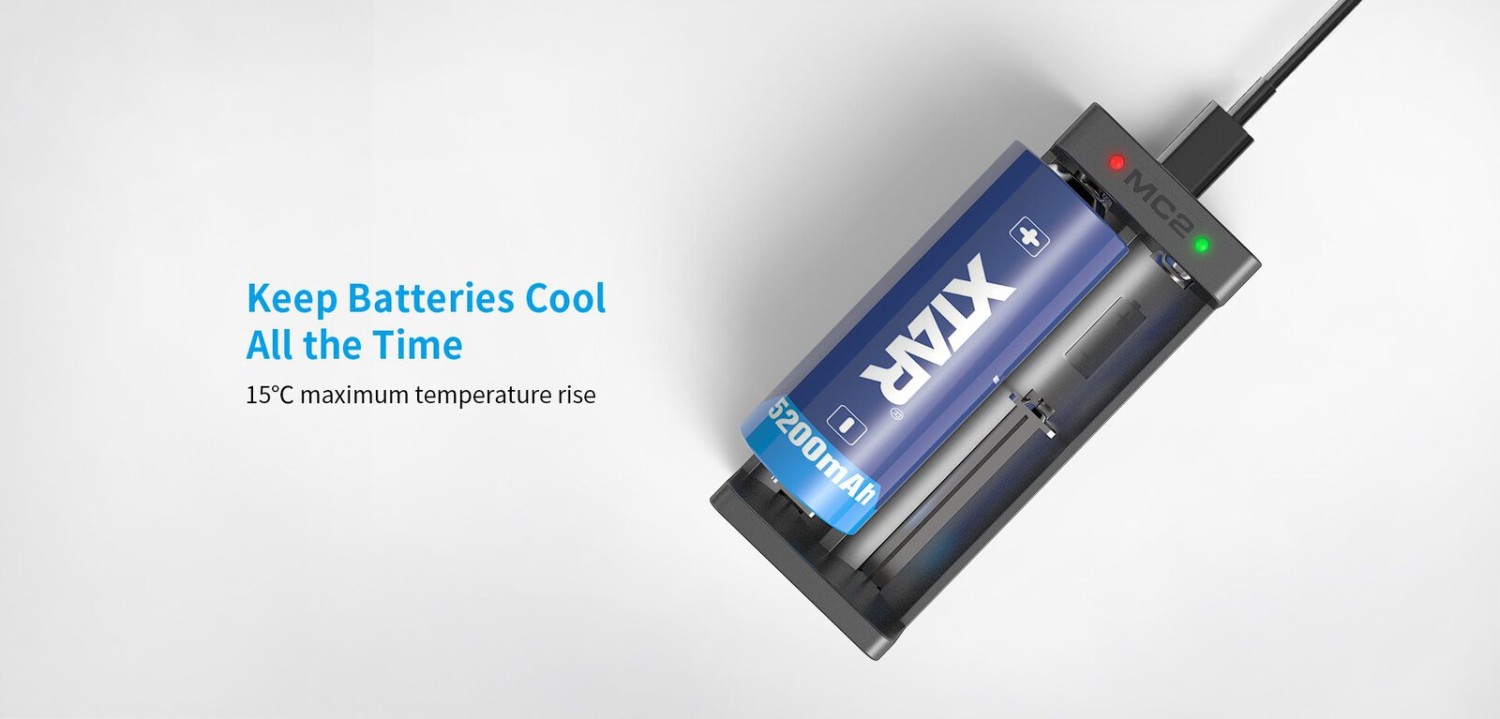
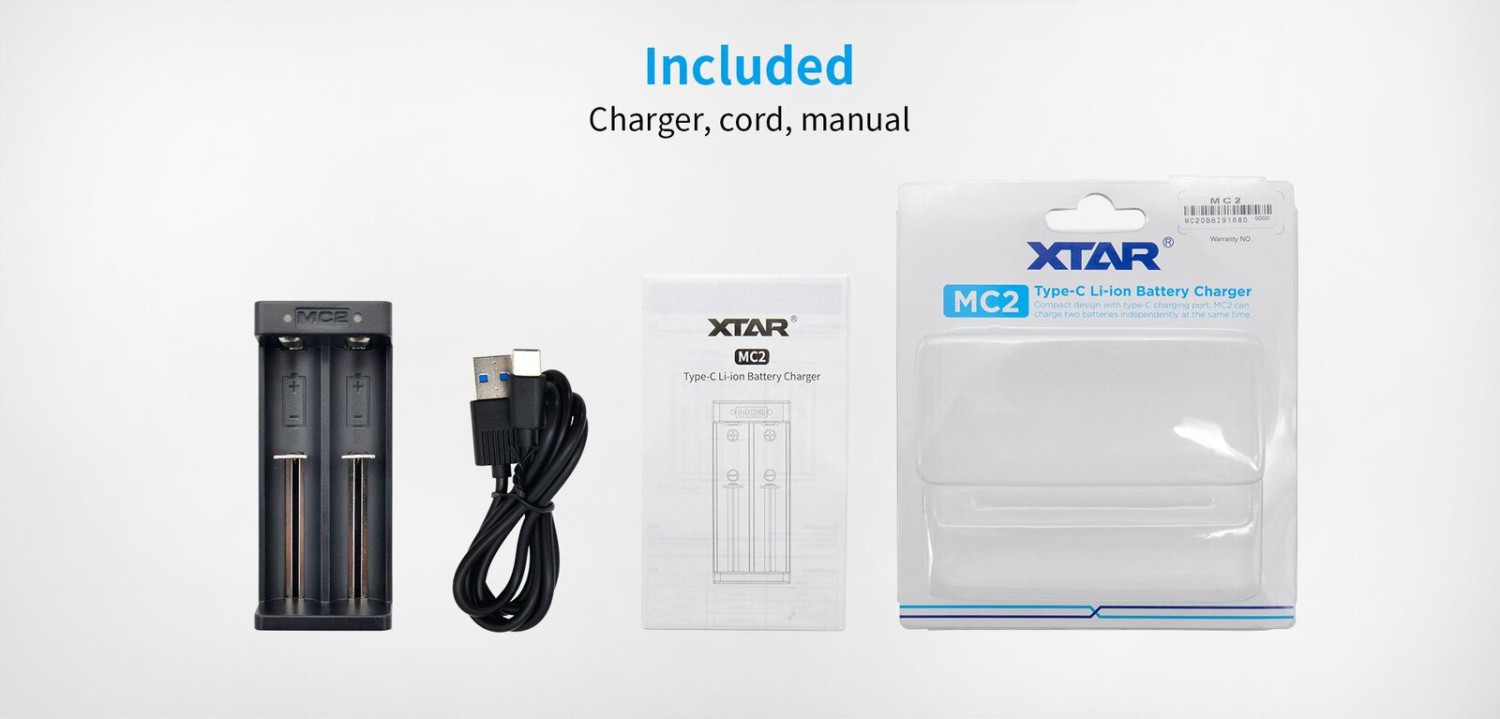
The Xtar MC2 charger comes with a micro USB cable and a cover to protect the charger during transport. A power adapter is not included. Any charger with a micro USB cable, e.g. from a phone, or a USB socket, or a computer with a free USB port will suffice to power the charger. The recommended charger power is 1A (1000mA).
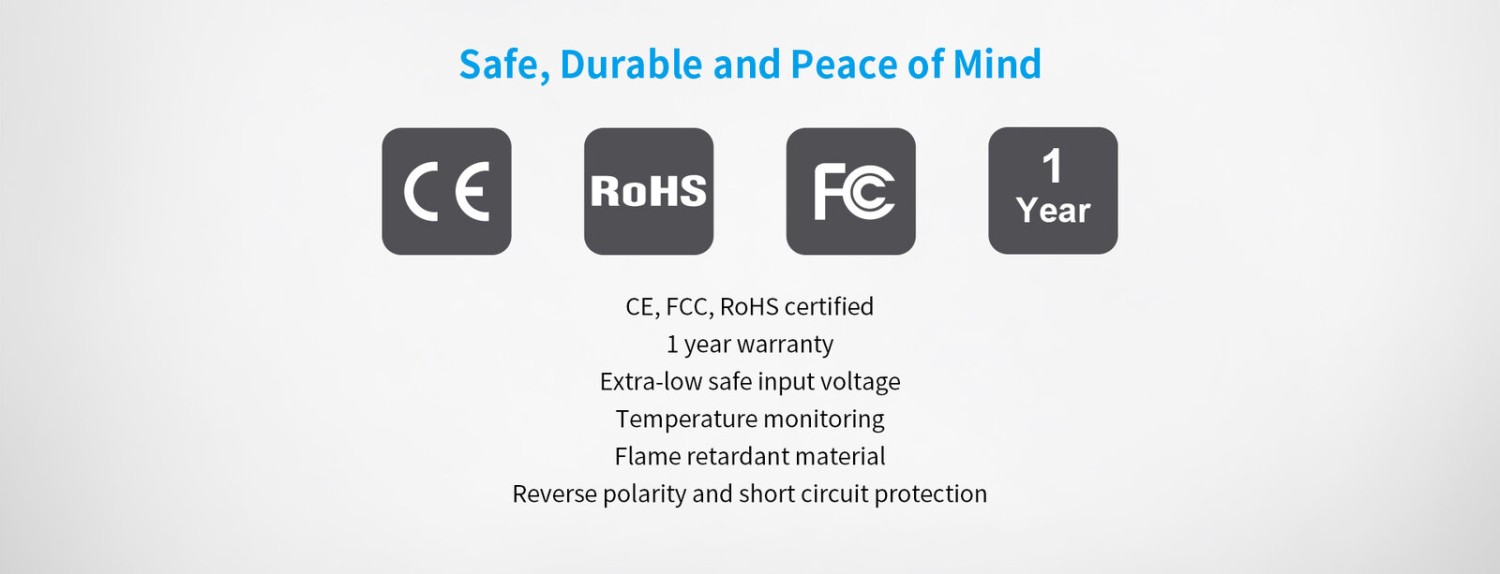
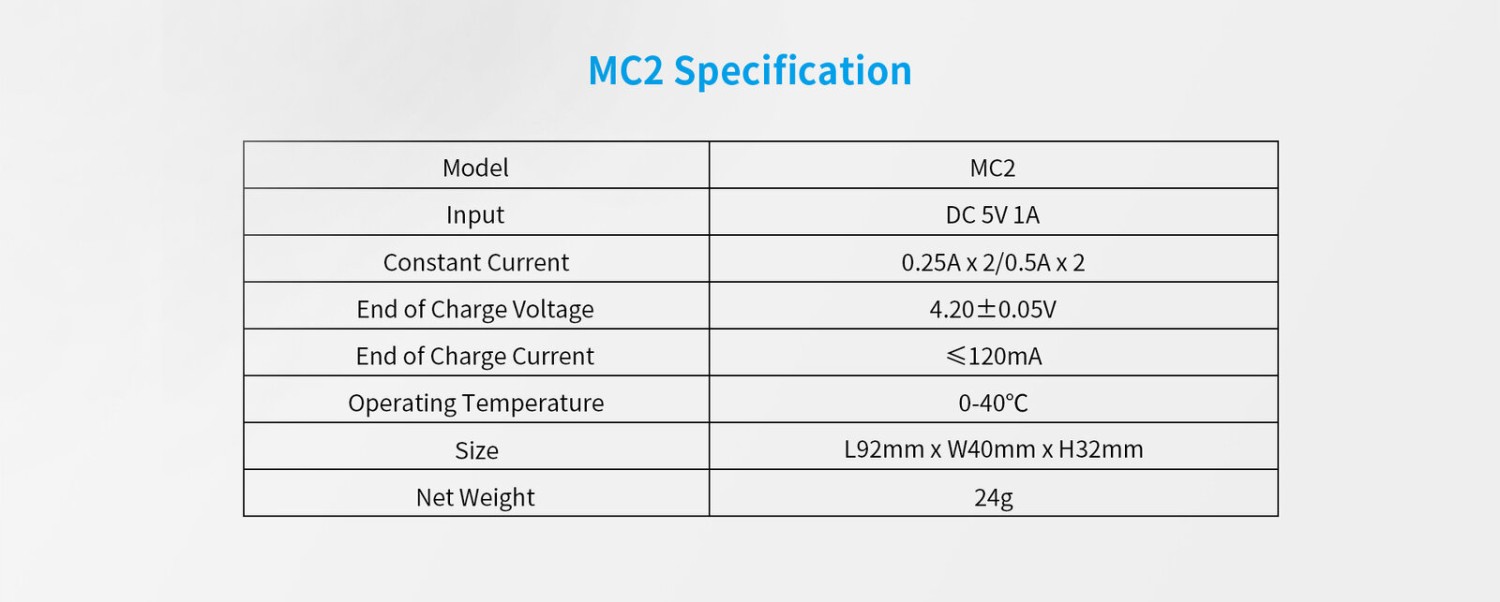
- Li-ion batteries 3.6-3.7V, protected (with PCM/PCB)
- Li-ion batteries 3.6-3.7V, unprotected
- 5 V (500 - 1000 mA)
- Processor-controlled TC/CC/CV for Li-ion
- 250 or 500mA ±50mA (depending on the power source used)
- 4.2V ±0.05V
- Reactivation of deeply discharged cells and 0V cells
- Before the charger overheats
- Against overload / short circuit
- Before reverse polarity of cells
- Charge
- MC2 charger, USB-C cable
Useful information
Specifications
Product description generated by artificial intelligence
XTAR MC2: Your Smart Li-ion Battery Charger
The XTAR MC2 is a two-slot intelligent portable battery charger designed for efficiency and safety. It's compact, lightweight, and perfect for charging your Li-ion batteries on the go.
Key Features and Benefits
- Charges two batteries simultaneously and independently: Maximize your charging time.
- Intelligent current adjustment: Automatically adjusts charging current based on power input (0.25A/0.5A).
- Flexible power options: Charges via USB cable, wall adapter, solar panel, or computer.
- Three-stage charging algorithm (TC-CC-CV): Ensures safe and efficient charging for extended battery life.
- Comprehensive safety features: Includes over-heat protection, short circuit protection, and reverse polarity protection.
- 0V activation function: Revives deeply discharged batteries.
- Compact and portable design: Easily fits in your pocket or bag.
- LED indicators: Provide real-time feedback on charging status.
- Compatible with various battery sizes: Charges a wide range of 3.7V Li-ion batteries (check specifications for exact compatibility).
Why Choose the XTAR MC2?
The XTAR MC2 stands out due to its combination of intelligent charging technology, safety features, and portability. It's a reliable and convenient solution for charging your Li-ion batteries, whether you're at home or on the go. Its compact size and multiple power options make it ideal for travel and everyday use.
Specifications
| Parameter | Value |
|---|---|
| Input Power | 5.0V DC/1000mA |
| CC Current | 500mA or 250mA |
| Cut-Off Voltage | 4.20V |
| Operating Temperature | 0-40°C |
Note: Always refer to the manufacturer's instructions for safe and proper use.
This description is generated using artificial intelligence (AI) and may differ from the actual product. Common AI errors may include:
- Inaccurate product features: some technical specifications, colors, sizes or other parameters may be inaccurate or omitted.
- Incorrect compatibility information: AI may provide incorrect information about the compatibility of products with other devices or systems.
- Overly Optimistic Functions: in some cases functions may be provided whose product iš doesnt really have.
- Name or Model Discrepancies: AI may misrepresent the product name or model.
If you notice inconsistencies or have questions about the description, please contact us before purchasing the product, please contact us by e-mail to you: [email protected].







